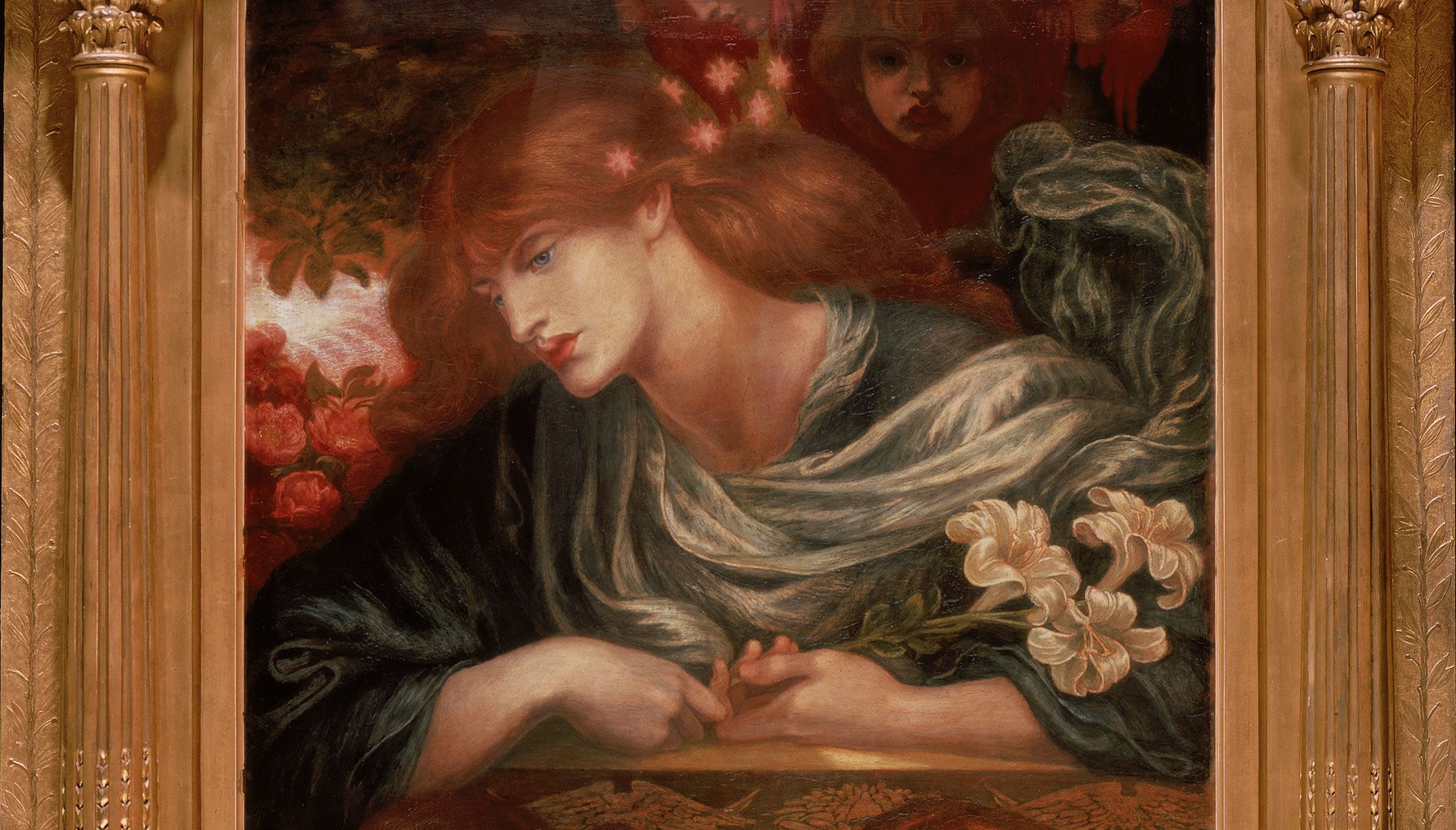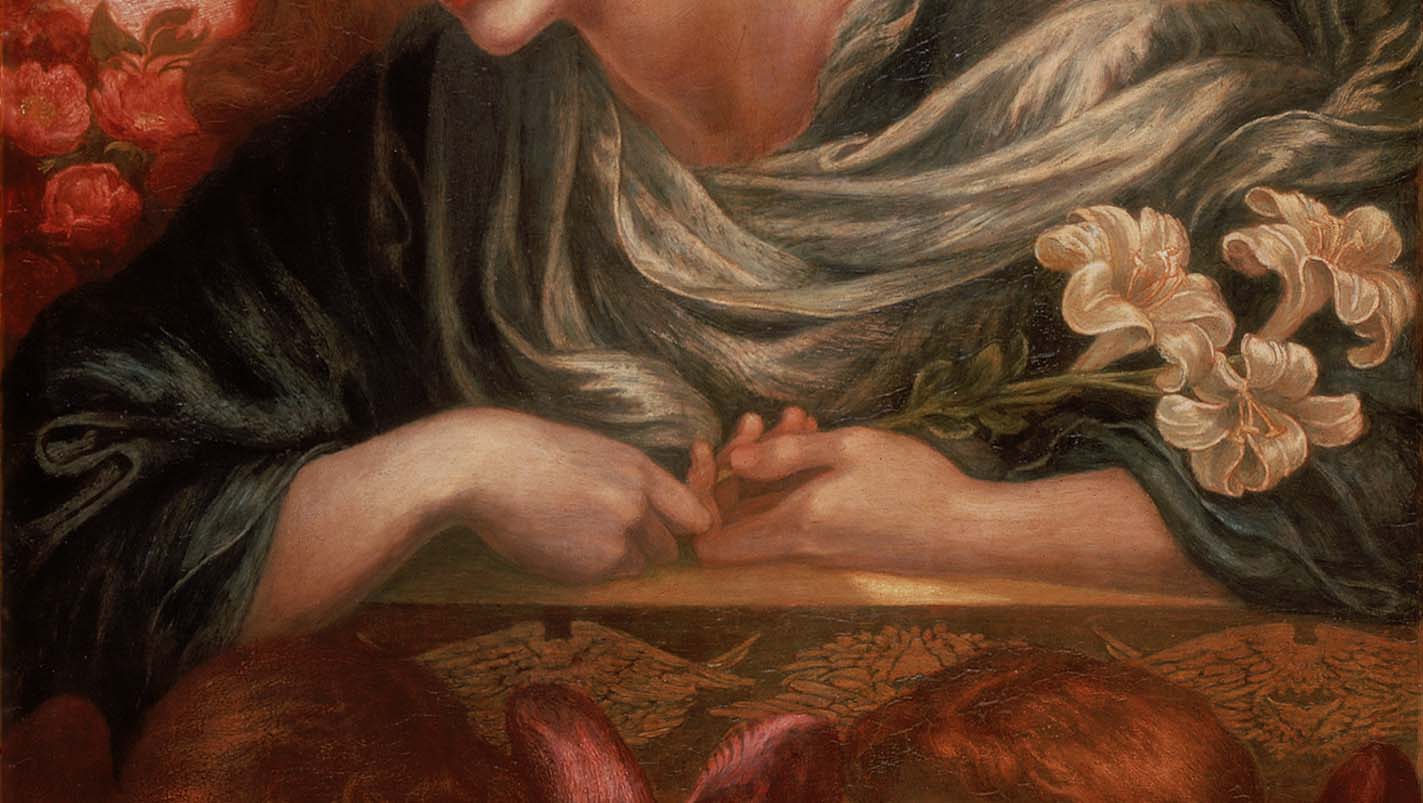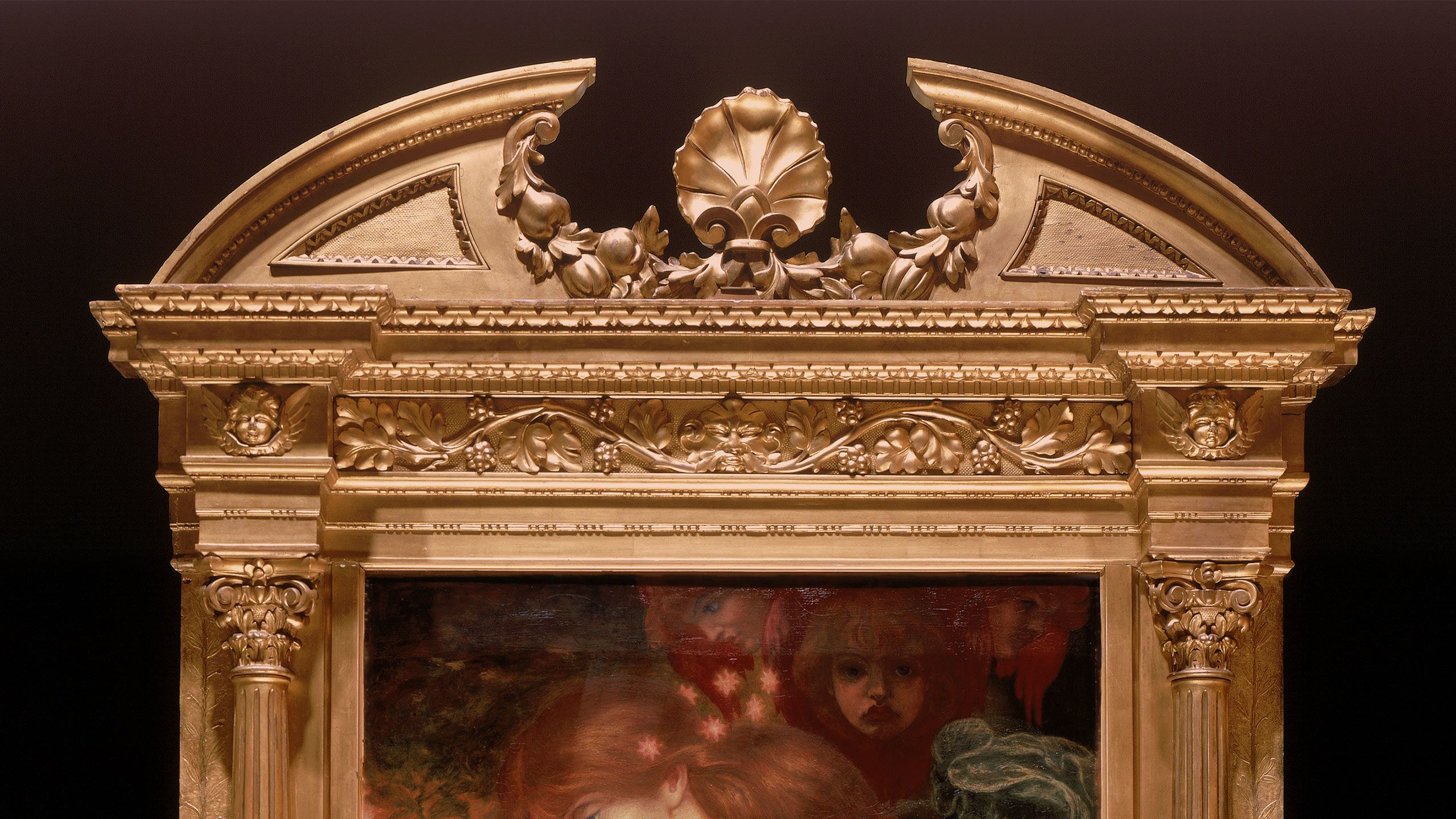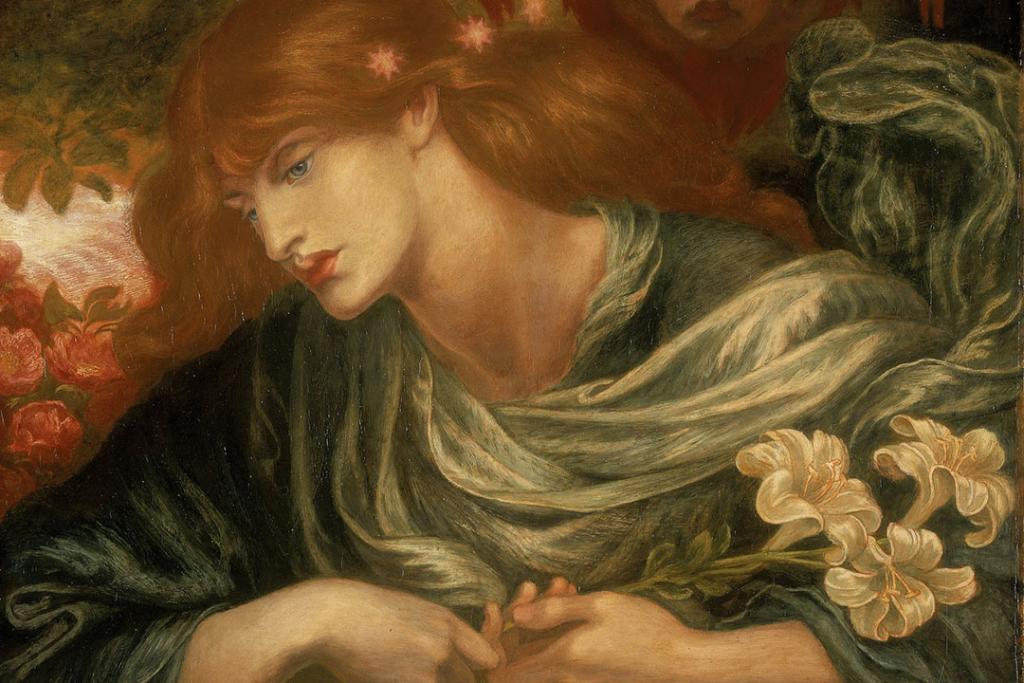The Blessed Damozel in focus
Take a closer look at Rossetti's painting

Dante Gabriel Rossetti wrote the poem 'The Blessed Damozel' when he was nineteen and published it in February 1850 in 'The Germ', a short-lived journal by the Pre-Raphaelite Brotherhood.
The poem is a long reflective musing about a woman who died young and went to heaven. There she pined for her lover and longed for the day when they would be reunited.
'I wish that he were come to me,
For he will not come,' she said.
'Have I not prayed in Heaven? - on earth,
Lord, Lord, has he not pray'd?
Alexa Wilding modelled for Rossetti's painting based on the poem. She is depicted in a scene described in this excerpt from the first stanza.
The blessed damozel leaned out
From the gold bar of Heaven;
Her eyes were deeper than the depth
Of waters stilled at even;
She had three lilies in her hand,
And the stars in her hair were seven.
Rossetti had cultivated a reputation as an artist and a poet. Several of his paintings are accompanied by poems, but the picture would usually come first with a poem written later. This is the only occasion when he based a painting directly on a pre-existing poem and there was a considerable gap between the two.
Twenty years after 'The Blessed Damozel' was first published in 'The Germ', a revised version became the opening poem in a collection of Rossetti's verse, which came out in 1870 to great acclaim. The following year his patron William Graham commissioned a painting based on the poem. That version of 'The Blessed Damozel' is now in the Fogg Museum at Harvard.
A second, smaller version of the painting was bought by the Liverpool ship owner FR Leyland, Rossetti's other major patron at that time. This painting is now part of the Lady Lever Art Gallery's collection.
Rossetti had a highly personal view of Christian cosmology which blended myth and legend from classical and medieval sources with Catholic symbolism.
Lilies are Christian symbols of purity but there doesn't seem to be any significance in the number of them, beyond the fact that three, like seven, is of ancient mystical and magical importance.

Both versions of the painting are split into two sections, in the style of a Renaissance altarpiece, with the main scene on a large canvas at the top and a smaller predella panel below for the secondary figure.
The upper part depicts heaven, with the damozel surrounded by angels, melancholically looking down towards her lover. Unhappy doomed couples were a common theme of Rossetti's paintings from this period.
The damozel's lover is shown in the lower section, reclining by a river in a wooded autumnal landscape, looking up to heaven.
This two-part design can be credited to Graham, who asked for the predella to be added in December 1877. Rossetti thought that this enormously improved the painting when he completed Graham's version in early 1878. It cost Graham £1000, plus £100 for the predella.
The gold frame on the Lady Lever Art Gallery's painting may not have been designed by Rossetti.
The heavy baroque pediment and narrow columns are motifs that differ radically from his other frame designs. The overall format is reminiscent of 17th century stone memorial plaques on church walls.
The frame may have been designed to complement the gilt furniture in the drawing room of Leyland's London house, where the painting originally hung.

In a review of the painting FG Stephens wrote:
"technically speaking this is a rich and supersubtle study...
A great charm of the whole consists in the grace of the attitude of the damozel, but the noblest point of all is the intensity of the expression of her face."
'The Blessed Damozel' was on loan to the Tate Britain exhibition The Rossettis in 2023 but is now back on display in the Lady Lever Art Gallery's main hall.
© Pete Carr
© Pete Carr





